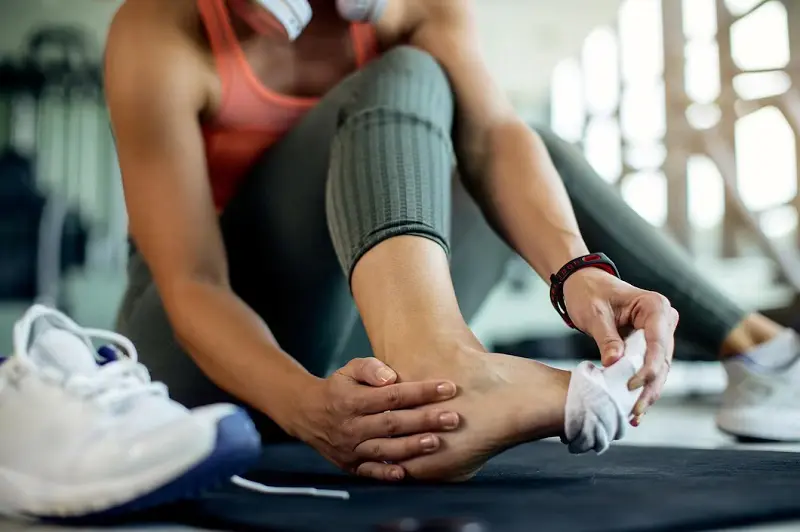Ankle sprain, or “twisting” / “rolling” the ankle is a common injury seen in sports requiring jumping and landing on one foot, or sudden cuts and changes of direction.
Despite all the evidence available, 1/5 of sprained ankles become a chronic problem.
What are the main causes of an ankle sprain?
Landing on an uneven surface, or pushing-off laterally from acute cutting maneuvers are the 2 main causes of injury. Sports like trail-running, tennis or basketball are particularly at risk. The most likely anatomical structure to get damaged is the ankle’s anterior ligament, but somemuscles can also sustain a strain altogether. In the most severe cases, the fragment of a bone can be detached.
How do I know if the ankle sprain is severe, or not?
Over the years, international guidelines have been established to help assessing the severity of the sprain. Specific tests including palpation and questions in regards to what happened immediately after the injury will help to decidefor additional tests like an X-ray, or not.
What should I do right after I sprained my ankle?
For the first 2 to 3 days, it is important to protect the ankle. The use of tape can help to prevent any excessive lateral movement from occurring. The RICE protocol, that stands for Rest, Ice, Compression and Elevation s now being questioned. We can see and understand the benefits from icing for excessive swelling control, and pain management. But as inflammation is the first step towards healing, experts are now re-considering the need to delay the start of the actual healing response.
What exercises should I start with, after the initial relative rest?
Swelling, increased muscle tone and joint subluxation make it important to work on the sprained ankle range of motion. In a sitting position, slowly slide your foot on the ground, forward and back, stopping whenever a pain over 3/10 is felt. Do 3 sets of 10 repetitions. Try also to draw letters of the alphabet with your foot, at a slow and controlled pace.
Lying on your side, with the injured leg on the top, alternate pointing your foot down to the floor, then up to the ceiling. Do 5 sets of 10 repetitions.
Try to balance on one leg, for a total of 3 minutes per day. Remember to soften the knee, and do not hesitate to perform this in 20 to 30 seconds chunks at the beginning.
Stationary bike or swimming are both valid options to keep your endurance up. For cycling, push from the knee, not the ankle. In the pool, add a pull boy between the legs if the ankle feels uncomfortable. Start with 15 minutes, and increase the length progressively.
What next?
When pain starts to become under control, acute ankle sprains require more advanced exercises to add power and control. This is needed before returning to sport. We will get this covered in a future blog post.

